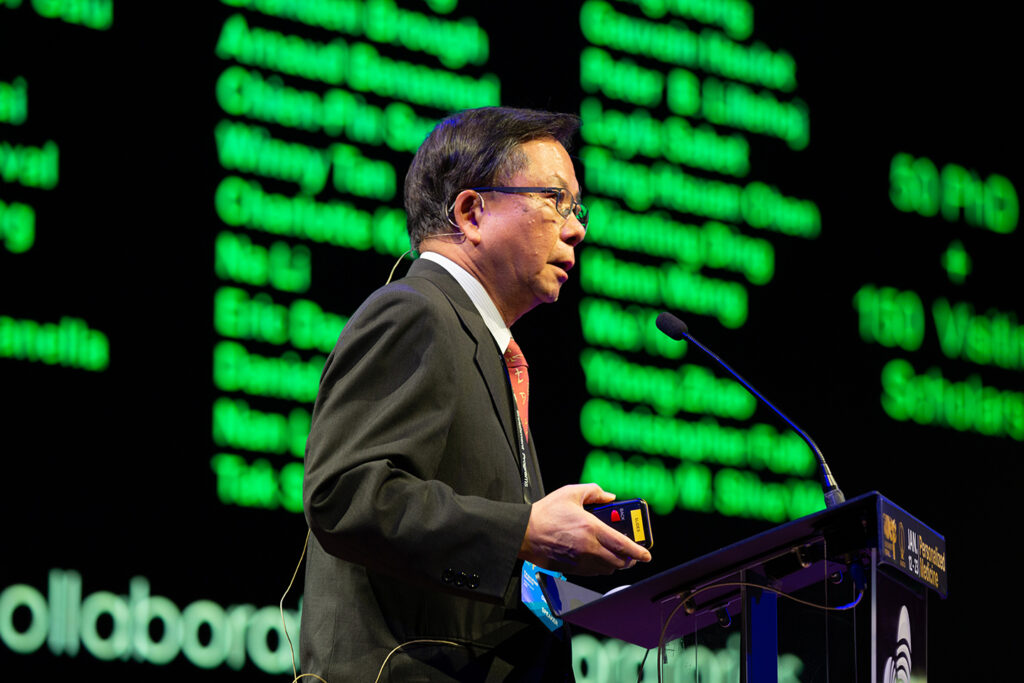
The Enrichment Office offers communication internships to students at KAUST during WEP. This article was written by Ananya Ashok, student, Marine Science (Ph.D.)
The future we are progressing towards, as exhibited at WEP 2020, will be all about finding tailored solutions to medical problems at various scales—molecular, individual, family and population. Through the second week of WEP lectures, attendees learned that personalized medicine is a complete package. It is the development of a drug as well as its delivery, and it is as much a method of cure as it is a paradigm shift in viewing healthcare.
Personalized medicine is made possible by recognizing high-risk individuals and groups through interpreting big and small data, identifying genetic factors and molecular mechanisms responsible for illnesses and developing novel delivery mechanisms with the end goal of customizing cure.
“Personalized medicine is not new. What is new today is the accuracy with which predictions can be made,” stated Natasha McEnroe in her WEP keynote lecture about the history of medicine.
Perhaps a physician in the time of Hippocrates would have known about illnesses running in families, yet without knowing why or being able to tailor medical solutions to prevent such diseases. In the time of “Personalized Medicine,” we are closer than ever to finding ways to deliver this while overcoming new challenges.
Eliminating the ‘one-size-fits-all’ approach

Diseases are expensive. “Poor health costs not only individuals but [also] families, societies, governments and entire nations,” said Harvard Professor Rifat Atun, introducing the concept of “precision health.”
Finding and scaling up personalized solutions to populations is a unique challenge. In 2020, the volume of health data generated worldwide will be 2,314 exabytes. All of this data can be used to eliminate the one-size-fits-all approach by identifying demographic patterns in disease vulnerability. Solutions could range from simply nudging risk groups towards healthier choices through social media or building AI agent buddies for supporting chronically ill patients.
While precision health seems to be a critical solution, achieving this could be harder than imagined. For example, healthcare delivery systems have seen very little innovation for centuries now.
“We cannot solve our problems with the same thinking we used when we created them,” Atun concluded, calling for multi-level innovation.
The next level in personalizing medicine

Regardless of risk groups, there is a high degree of individual variability that impacts the outcome of treatments, as the audience learned from the WEP lecture by UCLA Distinguished Professor Chih-Ming Ho.
Highlighting that, in a population, only one in four people responds as desired to chemotherapy, Ho questioned, “How do we treat a patient without getting much data from him?”
Data and AI provide the right tools to solve this problem, explained Ho. Molecular mechanisms and systemic responses of diseases are different magnitudes. Because AI is mechanism-free, it is possible to optimize a drug dose, while it could take forever to understand why it worked.
Ho’s team wanted to optimize the drug dosage. They did this by fitting dose responses of patients to parabolic response surface (PRS) and deriving personalized coefficients. Fitting the coefficients to an algebraic equation solved the problem of accuracy in drug dosage.
“Disease is personal. Treatment should be personal,” emphasized Ho.
Medicine may even be rocket science

Thinking leads to innovation. Innovation to betterment. However, in a time where newer challenges outcompete innovations, do we need something more?
A statement by Ho—“We have to come up with disruptive technology”—set the context for Professor Mark Kendall’s talk on leaping towards personalized medicine. Kendall is also a recipient of the Rolex Awards for Enterprise.
Medicine may not be all biology or chemistry—sometimes rocket science helps, too. Many of us know is that the skin is our largest organ. This should be an incentive to understand the skin better. Yet our drug delivery mechanism—injecting medicines into the surface of the skin—has not changed in centuries, pointed out Kendall.
Applying principles of rocket mechanics to biology, Kendall inspired me to think differently. Disruptive technology does not require thinking outside the box—it requires thinking without a box.
Kendall studied why an injection plunger is sometimes ineffective. The answer, he discovered, is the skin. He identified certain bundles of cells in the skin’s layers that prevented useful needle entry and diffused the drug delivery. His team then developed the “Nanopatch,” which revolutionizes the delivery of drugs by injection. Nanopatch is temperature stable and it costs less than $1 each.
“This revolution is a complexity,” he said. “It’s a whole lot of things happening simultaneously. We don’t know who the champion is going to be. Might as well be one of you in this room.”
Even when medical technology is developed in a lab, it takes a sense of purpose to be able to commercialize it, Kendall noted to the audience. In a place like KAUST, where research and enterprise come together, this kind of innovation becomes possible.
Creating the future that we want through inspiration

In today’s world, we are witnessing many changes; for example, new chemical reactions, novel diseases and many other issues that challenge humanity’s innovative thinking capacity.
We also have some incredible “living technology” that ranges from handheld genetic sequencers to living mushroom lights to microbe mining kits and bionic implants. However, all this might not be enough, said WEP speaker and science fiction writer Dr. Elsa Sotiriadis, who claimed that through a chip implanted in her hand, she has become a cyborg. Today’s technology facilitates the chip to tweet on her behalf, and in the future, it could do a lot more.
The greatest ability of the human mind is to imagine what does not yet exist. Our world today was already imagined decades earlier by science fiction writers. Innovation commonly underlies improving on existing conditions.
“We need a more powerful tool for the current scenario: science fiction,” said Sotiriadis.
By imagining what does not yet exist, we can propel our civilization forward. Companies and tech institutions need to hire science fiction writers who imagine what’s beyond the frontier of current human innovative capacity, Sotiriadis stated. Some people imagine, some write, some create and some revolutionize.
“We can take the future that is sold to us, or we can create the future we imagine,” she concluded.
About WEP
The annual Winter Enrichment Program (WEP) is one of the hallmarks of KAUST. WEP is a two-week program with the primary purpose of enriching and inspiring the University’s students and KAUST community members, as well as academic and industrial partners and guests, who are all invited to join the program.
All the keynote lectures and Sciencetown podcast interviews are available on YouTube.
